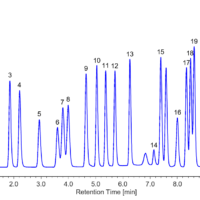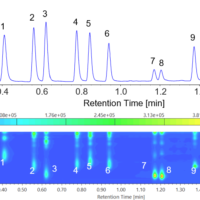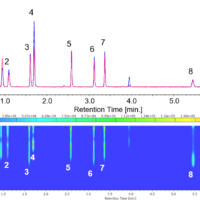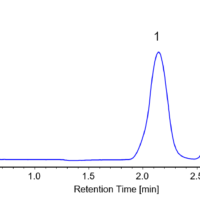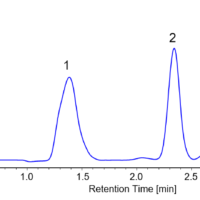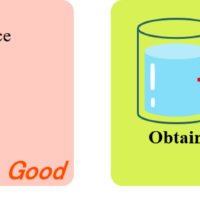Introduction
It is becoming a big concern that aldehydes such as the formaldehyde and acetaldehyde as an environmental pollutant may contaminate environment such as the atmosphere, lakes and marshes, reservoirs, and rivers. Therefore, it is an object of various regulations like Air Pollution Control Law, Water Supply Law, and Offensive Odor Control Law, etc. As a method to measure aldehydes using HPLC, the pre-column derivatization method by 2,4- DNPH is well known, while the pretreatment such as sample collection, condensation and extraction is necessary. JASCO has introduced so far the analysis of formaldehyde and acetaldehyde by the post column fluorescence derivatization method using 1,3- Cyclohexanedione as a derivatizing reagent, which doesn’t need such pretreatment like condensation etc.
Here, in addition to two components, five components including propyl aldehyde, butyraldehyde, and valeraldehyde were analyzed simultaneously.
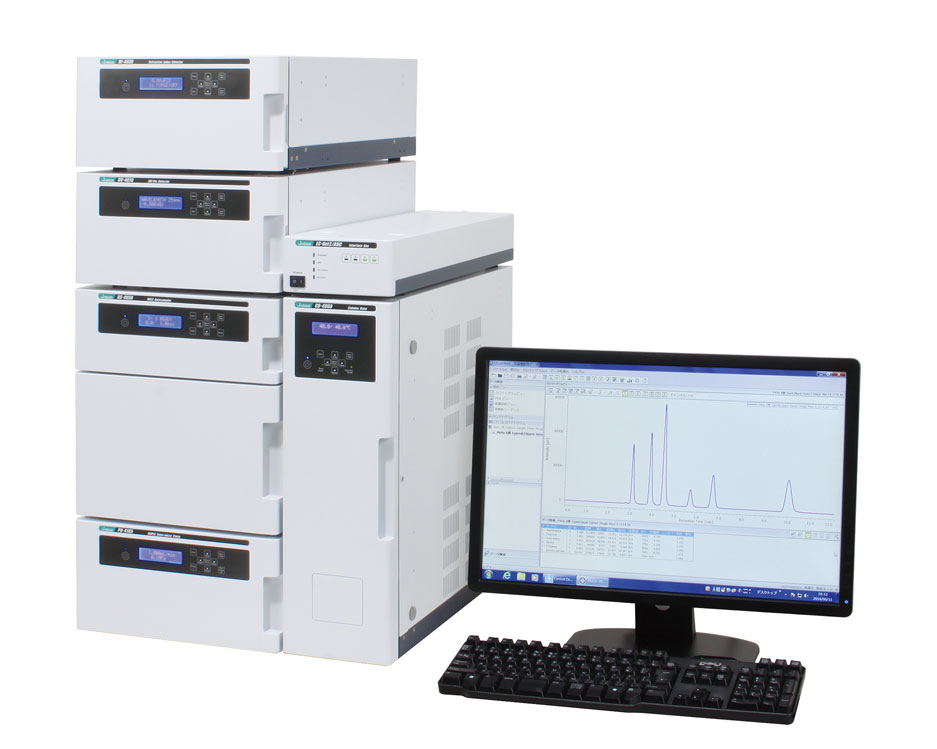
LC-4000 HPLC system
Experimental
Column: Shodex RSpak KC-811 6E (6.0 mmID x 250 mmL)
Eluent: 3 mM Perchloric acid
Flow rate: 1.0 mL/min
Reagent: 1,3-Cyclohexanedione in ammonium acetate buffer
Reagent flow rate: 0.4 mL/min
Column temp.: 60 ºC
Reaction temp.: 120 ºC
Wavelength: Ex. 366 nm, Em. 440 nm, Gain x10
Injection volume: 100 µL
Standard sample: Formaldehyde, Acetaldehyde, Propylaldehyde, Butylaldehyde, Valeraldehyde 0.1 mg/L each
Keywords
Aldehydes, 1,3-Cyclohexanedione, Post column derivatization method, Shodex RSpak KC-811 6E, Fluorescence detector
Results
In Figure 1, 1,3-Cyclohexanedione reaction formula of post column derivatization method is shown and Figure 2 illustrates Flow system diagram.

Figure 1. 1,3-Cyclohexanedione reaction formula of post column derivatization method

Figure 2. Flow system diagram
Figure 3 shows the chromatogram of 5 components of Aldehydes. As shown, 5 components were clearly separated within 16 min. The minimum detectable amount(in case of S/N=3) of each component is as below.
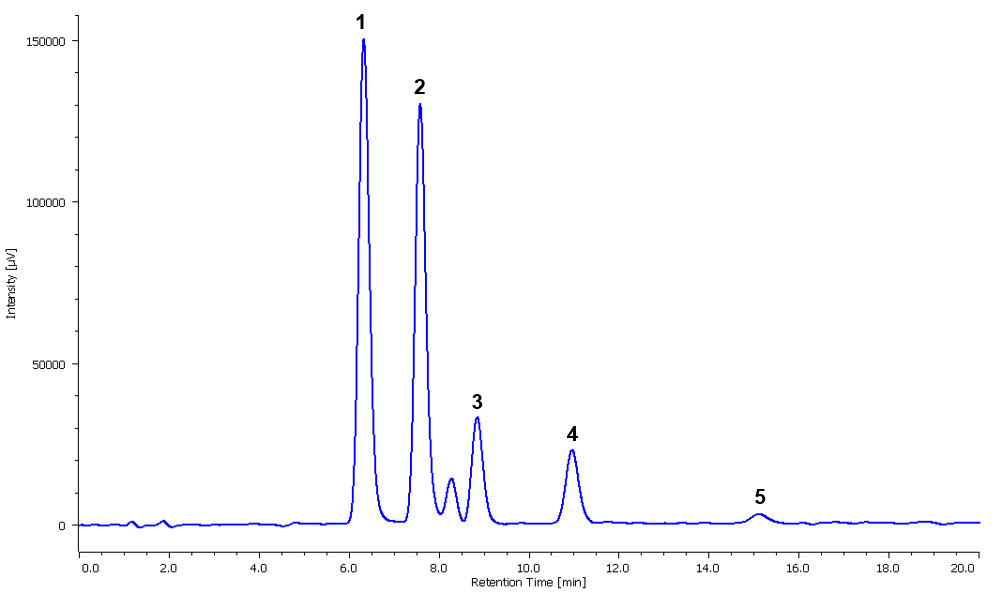
Figure 3. Chromatogram of five components of aldehydes
Minimum detectable amount of each component
1: Formaldehyde (0.091 ng)
2: Acetaldehyde (0.105 ng)
3: Propylaldehyde (0.418 ng)
4: Butylaldehyde (0.593 ng)
5: Valeraldehyde (4.53 ng)

